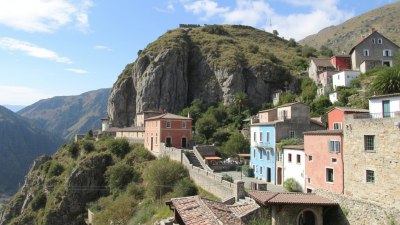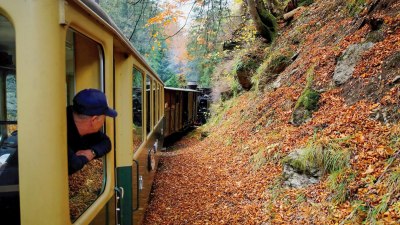There Is No Translation for What This Place Means
Explore the deep cultural significance of places that defy translation. Discover emotional connections and unique experiences.

Image created with Flux Schnell
When we attempt to describe the profound significance of a place, we often struggle to find the right words. The depth of meaning associated with certain locations can feel almost ineffable, capturing emotions, memories, or cultural identities that transcend simple concepts. This article delves into the notion that some places hold meanings so rich and diverse that no translation can adequately convey their essence.
The Concept of Place
Places are more than mere coordinates on a map; they embody histories, cultures, and experiences that shape our lives in immeasurable ways. From our childhood homes to the bustling cities we visit, every location carries with it a treasure trove of significance. The word 'place' comes from the Latin 'planum', meaning 'flat surface', but it quickly evolved to encompass much more than physicality. Today, 'place' speaks to the emotional ties we form and the narratives we build around our interactions with the world.
The Challenge of Translation
Language is a powerful tool, yet it has its limitations. When we try to translate the meaning of a place, we often lose the essence of what makes it special. Consider the Japanese concept of 'komorebi', which refers to the sunlight filtering through the leaves of trees. This term encapsulates a specific sensory experience that goes beyond mere sunlight or trees—it's an invitation to pause and appreciate nature's beauty. Similarly, there are places that evoke emotions too profound to be reduced to words, making their translations inadequate and their significance lost in linguistic interpretations.
Cultural Significance and Identity
Certain places hold considerable cultural importance, acting as a reflection of a community’s identity. For instance, the Sacred Valley in Peru is not just a beautiful landscape; it is a symbol of the Inca civilization and a site dedicated to spiritual rituals that have been practiced for centuries. The meaning of such places cannot be encapsulated in a simple phrase or translated into another language; they are layered with history, tradition, and spirituality that contribute significantly to the culture they embody.
Emotional Connections
Place can evoke profound emotional responses. Take, for instance, the beaches of Normandy in France, where the echoes of history resonate through time; visiting these sites can be a deeply moving experience, one that may leave an indelible mark on a person's psyche. The emotional weight of such places is often so heavy that translating it into words seems futile. The feelings of loss, remembrance, and reflection that accompany a visit to Normandy cannot be encapsulated in a single expression—the nuances of personal and collective memory mingle with the physical space to create a powerful connection that transcends language.
Personal Experiences and Narratives
Individuals often have personal stories tied to specific places—stories that shape their identities and experiences. For instance, a person may feel a deep connection to a particular café where they spent afternoons writing, a park where they proposed to their partner, or a spot overlooking a city that signifies new beginnings. These narratives are deeply personal, woven into the fabric of a person's life. While language allows for the sharing of such stories, the intimate nature of the experience often remains untranslatable, making the place unique in its resonance with that individual.
The Intersection of Memory and Place
Memory plays a central role in how we perceive places. Nostalgia can imbue a location with a sense of meaning that goes beyond its geographical identity. In this sense, places can become vessels of memory—repositories of cherished moments that individuals return to time and again. For example, childhood homes may elicit feelings of nostalgia that bring forth vivid recollections of family gatherings, laughter, and love. Such memories are personal and cannot be fully shared through mere language. They exist as a unique tapestry of experiences that define one’s relationship with that space.
Shared Human Experiences
While language may fall short in translating the meanings of some places, shared human experiences can bridge the gap. Gatherings, celebrations, and rituals create communal ties that connect people to specific locations. Consider the significance of Mecca for Muslims during Hajj; it's a place of pilgrimage where millions gather to fulfill a spiritual obligation. The sheer magnitude of this event encapsulates collective human experience, showcasing how places can resonate with shared faith, culture, and devotion that transcend linguistic boundaries.
The Role of Nature
Nature often amplifies the meanings associated with a place. The tranquil beauty of a forest, the vastness of the ocean, or the grandeur of mountains can evoke feelings of awe and introspection that are difficult to articulate. The natural world communicates on a level that frequently bypasses words—its beauty can captivate us and stir emotions that need no additional explanation. Nature then becomes an integral part of the meaning attributed to a place, enriching our experiences and fostering deeper connections that transcend language.
Embracing the Untranslatable
In a world characterized by globalization and cultural exchanges, it's essential to recognize and appreciate the places that defy translation. Whether through cultural significance, emotional connections, personal narratives, or the power of nature, some locations resonate with our hearts and souls in ways we cannot easily articulate. As we traverse different landscapes and immerse ourselves in diverse environments, let’s celebrate the beauty of the untranslatable, recognizing that the essence of place often surpasses the confines of language. Embrace the feelings these places invoke, for they are often the richest experiences of our lives.











